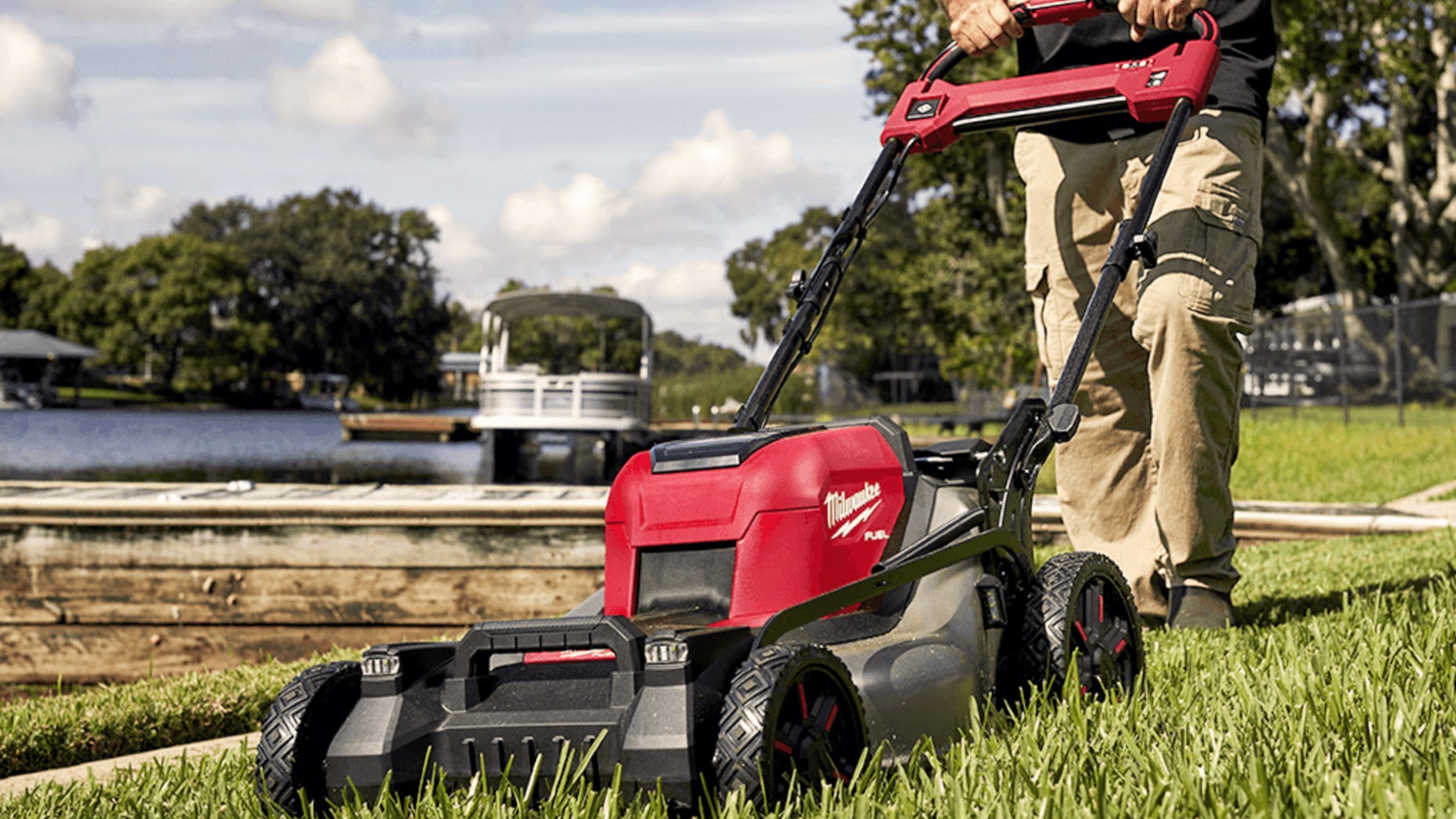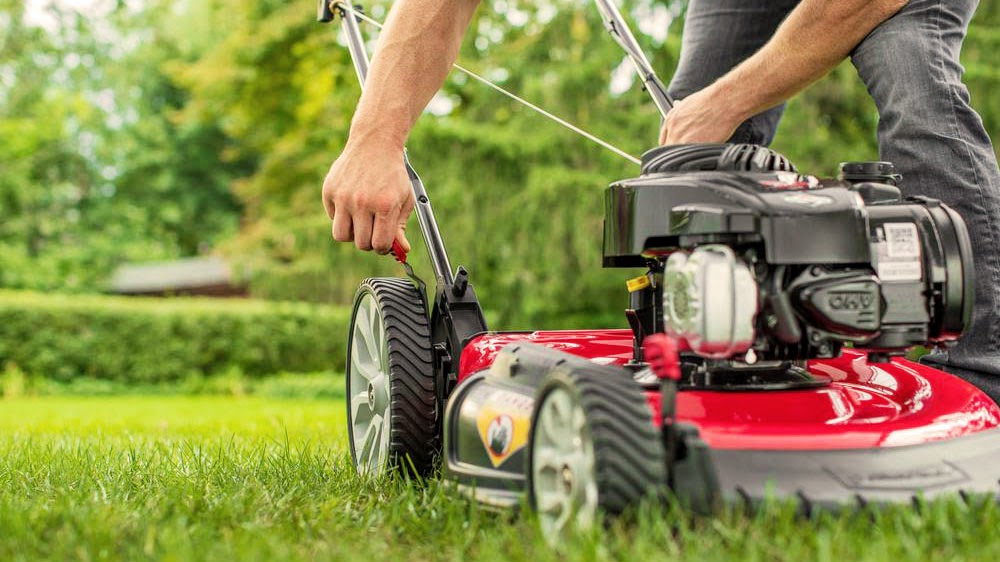If you're preparing the lawn for fall then you'll want to know how to avoid these lawn mowing mistakes to adequately prepare the backyard for the colder months, and in to the new year.
Most of us tend to mow on auto-pilot, eager to get through the job at hand and stuck in our old habits and patterns. But have you ever stopped to wonder whether you’re doing it right? We’ve done the research and spoken to the experts to find out the top ten lawn mowing mistakes we all make in our backyards, from cutting the grass too short, to bagging those nutritious clippings.
We’ve compiled a list of common lawn mowing mistakes, complete with advice from a gardening expert on what you should do instead. These simple fixes will leave you with a healthier, tidier, better-looking lawn in no time.
Plus, if you’re in the market for a new lawnmower, the best gas lawn mowers or the best electric lawn mowers could be the perfect fit for your backyard.
Lawn mowing mistakes

1. Cutting the grass with dull blades
If the blades in your mower are dull and blunt, the mower will rip and tear your grass instead of cutting it cleanly away. This can leave your grass vulnerable to pests and disease, not to mention looking pretty unkempt. Instead, take a look at our expert article on how to sharpen your lawn mower blades, or take them to a specialist for regular sharpening.
2. Cutting the grass too short
You may be tempted to give your lawn an extra close cut from time to time, especially if you’re going on vacation. But cutting your grass too short can help moss and weeds to thrive, and it can leave your lawn more vulnerable to drought.
A general rule of thumb is to cut one-third of the grass length away. If you’re dealing with extra long grass, cut it more frequently to get to your desired length, instead of shearing it back in one go. If you’ve already scalped your lawn and you have patchy areas, let nature take its course and allow the grass to recover. Watering the lawn more frequently will help this along.
3. Cutting wet, cold grass
Often a source of great debate among homeowners - the truth is you shouldn’t cut wet grass. Wet grass cuttings will stick to your machine and clog up the working parts. You’ll also find that grass clumps form on your lawn, blocking out light that will result in patches of dead grass. Instead, try to mow before rain is forecast, or give your lawn at least a day or two to dry out after rain, before you move in with the mower.
It's also advised to watch the temperature. When the temperature falls below 40°F grass becomes dormant, so it won’t grow. This means that mowing will do no good to your lawn since it won't be re-growing. Once you see fresh new growth in spring, then that’s the time to get out your mower for the first cut of the season.
4. Not cleaning your lawn mower regularly
After a hard hour or two of pushing that mower around, the last thing we all want to do is scrape off any clippings or clumps from the underside of the mower. But it’s a vital chore you mustn’t forget to do. Those harmless clippings can corrode the mower deck, and cause rusting and damage to parts. After every mow, do your best to get as many clippings out as you can. Remember to unplug, disconnect the spark plug, or remove batteries before putting your hand into the inner workings of a lawn mower. Those blades are sharp.
5. Not mowing enough
Experts agree that regular cutting keeps grass looking its best. The Royal Horticultural Society, which is responsible for many of England’s most beautiful and historic lawns, recommends mowing twice-weekly in summer, moving to once a week if the weather is particularly dry.
6. Mowing too fast
Running up and down your lawn with your mower may be good for your cardiovascular fitness, but it isn’t great for your grass. You’re likely to miss spots and your finish will be ragged and messy. Instead, take your time, slow it down, and you’ll have a regular, even cut with a precise finish. Save the aerobics for after, and just enjoy the mindful process of mowing.
7. Mowing the same way every time
Following the same pattern, mow after mow, encourages your grass to grow in the same direction, which can leave it looking rutted and uneven. Instead, vary your pattern with each mow, cutting lengthways one session, and width–ways the next. This will encourage your grass to grow upright, resulting in an even, more manicured appearance.
8. Bagging the grass clippings
That’s free nutrients for the soil you’re throwing away. Instead of bagging your clippings, leave them where they fall on the lawn. As long as you’re cutting the recommended ⅓ of the length, they’ll soon rot away, releasing all that extra goodness into what’s underneath and sealing in moisture. It also means less work for you at the end of the day.
9. Mowing rows too far apart
It may be tempting to aim for the Wimbledon look, but trying to be too precise with your rows can end up leaving you with ragged columns in between. Instead, overlap each row by around 3 inches. You’ll have the same effect, but fewer opportunities to miss a section of lawn.
10. Pulling, instead of pushing, your mower
When you move your lawn mower back and forth across your grass, you’re cutting the grass in two different directions, resulting in an uneven, messy appearance. And pulling any kind of sharp cutting instrument towards your feet, and potentially the cord of the lawn mower itself is a recipe for disaster. Resist the urge to pull back, and push forward steadily and slowly.
What the expert says…
We spoke to Fiona Jenkins, the resident gardening expert at My lob Quote, and asked her for her advice on achieving a great finish when you mow. Here are Fiona’s top five tips:
1. Keep blades sharp, using a sharpening stone, bench grinder, rotary tool, hand file, or angle grinder to keep those cutting edges in tip-top condition. Do this three times a year to ensure a clean cut, every time.
2. Leave length in your grass. Cutting it too short can affect how many nutrients it absorbs from the sunlight, resulting in patchy, sad-looking grass.
3. Never mow a wet lawn. Wait until the weather clears up before mowing, to avoid muddy mess and unnecessary damage.
4. Mowing a neglected lawn? Bring the height down slowly instead of going in for the kill all at once. Leave a few days between each trim to allow the grass to recover.
5. Always switch directions each time you mow. You’ll have fuller, healthier, upright grass blades which give a full and even appearance to your lawn.
Discover more guides for the garden…
Best robot lawn mowers
Best riding lawn mowers
Best electric weed eaters

